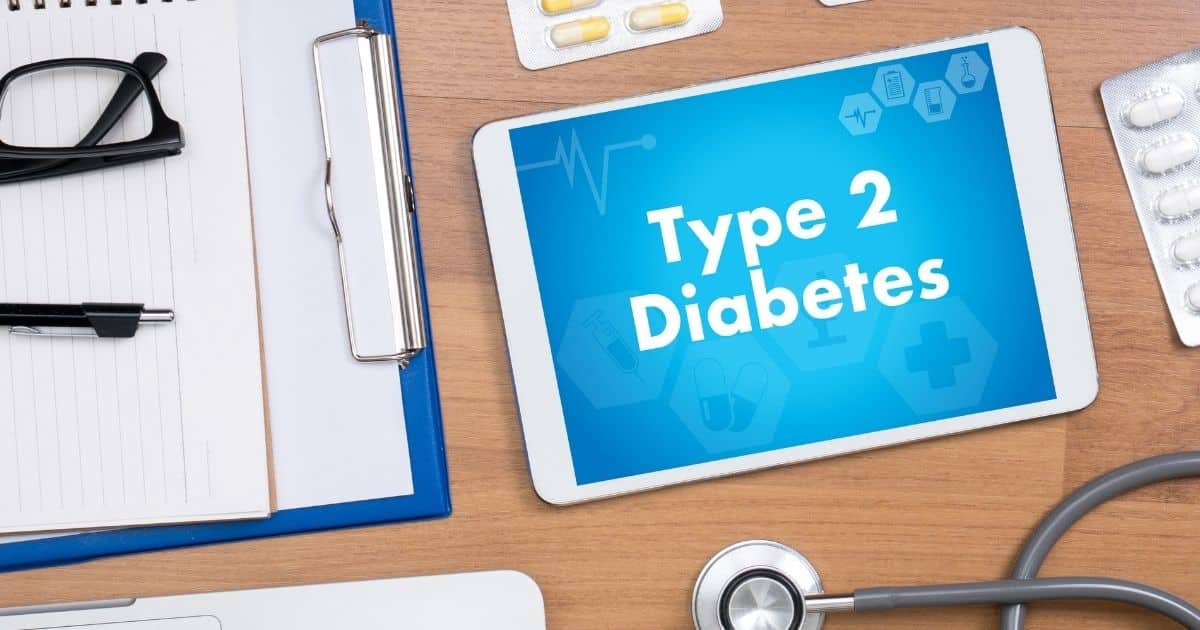Did you know that an estimated 23.1 million Americans have a diagnosis of diabetes? Among these diabetics, only about 5% have Type 1 Diabetes according to the Centers for Disease Control and Prevention (CDC). This leaves 95% with Type 2 Diabetes or some other blood sugar problem.
ABC News reported that one in every four men over the age of 30 have low testosterone levels. Not all men experience symptoms. Do you worry that you may have low testosterone?
Have you ever wondered if there is a connection between testosterone and diabetes type 2? Keep reading to learn more about the connection between Type 2 diabetes and testosterone levels in men.
Understanding the Role of Testosterone
Most people associate testosterone with macho male behavior. This misrepresents the role of testosterone in men. Testosterone is the major male sex hormone.
It plays an important role in:
- Development of the penis and testes
- Deepening of the voice at puberty
- Growth of facial and pubic hair that starts during puberty
- Loss of hair later in life
- Size and strength of muscles
- Growth and strength of bones
- Sex drive, or libido
- Sperm production
Testosterone affects your mood. Thus, alterations in mood may occur with changes in testosterone.
The testes receive signals from the pituitary gland in the base of the brain. This signal tells the testes to make testosterone. The hormone circulates in the blood and the blood level is “monitored” by the body.
When the testosterone level becomes too high, the pituitary gland tells the testes to stop making testosterone. This feedback loop allows the body to maintain a normal balance.
As men age, the testosterone levels decrease by about 1% to 2% every year. As the testes make less testosterone, they receive fewer signals from the pituitary. A protein known as the sex hormone-binding globulin (SHBG) increases as men age.
The decreased stimulation to make testosterone and increased SHBG causes a decrease in the active or free form of testosterone in the body. This occurs in about one-third of men over 45 years.
A low testosterone level shows only part of the picture. The practitioner must consider the patient’s overall health.
Having a low level does not mean that you must have treatment. If you are healthy and have no loss of function, you “don’t need to fix what isn’t broken.”
Symptoms of Low Testosterone
How will you know if you have low testosterone? Some individuals may think changes are normal. For example, if you feel increased stress in your daily home and work life, you aren’t surprised when you feel exhausted.
Did you know that this may be a sign of low testosterone? Other signs can include decreased interest in activities and hobbies. You may also notice decreased sexual attraction and sexual drive toward your partner.
Other symptoms of low testosterone include trouble losing weight and hypogonadism or small testicles. You may notice trouble concentrating and focusing and feel depressed.
Often, men see a doctor for these symptoms with other conditions in mind. They may receive treatment for depression or attention deficit, for example.
These treatments may not help because they are not getting at the root cause. The solution may lie in testosterone replacement therapy (TRT).
Causes of Low Testosterone
As mentioned, testosterone levels can decrease beginning at age 30. There are also many other potential causes of low testosterone including:
- Injury, trauma, or infection in the testes
- Chemotherapy, opioids, hormone therapy, and steroids
- Too much iron in the body
- Pituitary gland problems or tumors
- Acute or chronic illness
- Alcohol abuse
- Cirrhosis of the liver
- Kidney failure
- HIV/AIDS
- Inflammatory conditions of the lungs and other organs
- Problems with the hypothalamus
- Klinefelter Syndrome, a genetic defect
- High prolactin or estrogen hormone levels
- Obesity or extreme weight loss
- Uncontrolled Type 2 Diabetes Mellitus (T2DM)
- Obstructive sleep apnea
- Abuse of anabolic steroids
- Head trauma
- Radiation exposure or surgery in the brain
Several birth defects and delayed puberty can also contribute to low testosterone levels.
What Is Type 2 Diabetes?
Diabetes describes a condition in which the body can’t regulate blood glucose levels. This causes the blood sugar level to rise too high.
Insulin is the hormone that helps glucose (blood sugar) to go into your cells and give them energy. When the glucose stays in the blood, your glucose levels rise leading to many serious health problems. These problems include damage to the heart, eyes, kidneys, nerves, gums, and teeth.
There are two types of diabetes. Individuals with type 1 diabetes mellitus do not produce insulin. T2DM is more common and involves decreased insulin production and use by the body.
Your risk of developing T2DM increases with age. Other risk factors include obesity, family history of diabetes, and lack of exercise. A diagnosis of prediabetes also increases your risk.
Prediabetes means that your blood glucose stays higher than normal. The blood sugar is not as high as in diabetes, though. Making lifestyle changes can decrease your risk of developing T2DM.
Signs and symptoms that may occur with T2DM include:
- Increased thirst
- Frequent urination
- Increased hunger
- Increased fatigue
- Weight loss without trying
- Slow healing of wounds
- Changes in eyesight
These symptoms may develop over time. They may even appear slowly and go unnoticed.
If you have some of these symptoms, see your physician. They may check your blood using the A1C test.
This looks at average blood sugar over time. The A1C is used in managing diabetic treatment.
If you are diagnosed with T2DM you will receive a treatment plan. This will include healthy eating, physical activity, and blood glucose testing. Some individuals may also take medications to keep their glucose within a normal range.
How Are Testosterone and Diabetes Type 2 Related?
Research has found that sex hormones in the body play a role in the development of T2DM. One study reported an association between low testosterone levels and increased risk for T2DM among men. Another study found that individuals with T2DM had lower testosterone levels than those without diabetes.
Yet two other studies concluded that free testosterone levels weren’t linked to T2DM risk in men. Thus, it’s not clear if free circulating testosterone levels directly impact male T2DM risk.
Due to these conflicting results, researchers conducted a meta-analysis. The purpose of this study was to examine the relationship between circulating testosterone and T2DM risk in men. Researchers looked at previous research studies.
The findings of this meta-analysis showed a reserve-causality relationship. This means that as testosterone levels decrease, the risk of T2DM increases in men.
A professor of Urology at Loyola University Medical Center, Ahmer Farooq, discussed testosterone levels and diabetes. He reported that low levels of testosterone in men correlates with insulin resistance or decreased sensitivity. This describes what happens in T2DM.
The symptoms of low testosterone and diabetes, are very similar. Fatigue features prominently in both cases. Also, erectile dysfunction occurs in men with both conditions.
An important take-away point is that men with T2DM have an increased risk of testosterone deficiency and altered sex steroid status.
Does Lifestyle Affect Testosterone and Diabetes?
Unhealthy lifestyles increase your risk for diabetes and altered testosterone levels. TRT can help treat low testosterone levels. Yet, if harmful lifestyle factors aren’t modified, you may not experience full treatment benefits.
You may also make your T2DM worse and decrease treatment success. So, what should you do to make sure you get the best treatment outcome?
Increased body mass index (BMI) increases your risk of low testosterone and T2DM. Diet and exercise are important to help lower your BMI. Both are important parts of the treatment plan for T2DM as well.
Men need to decrease the amount of fat and sugar in their diet. It’s important to understand that digestion breaks some foods down into sugars.
This increases your glucose levels. Examples include fruit, carbohydrates, and juices.
Additional risks include drinking alcohol, smoking tobacco, and other recreational drug use.
Thus, men should decrease the amount of alcohol they consume. Animal studies show that short and long-term alcohol intake decreased testosterone levels.
This occurs because alcohol decreases the function of the hypothalamus and pituitary gland. Remember that the pituitary gland signals the testes to produce testosterone.
Smoking may also increase the risk of metabolic syndromes. One study found that increasing the number of packs of cigarettes smoked increased SHBG levels.
Smoking is also associated with an increased risk of diabetes. Thus, stopping smoking decreases health risks.
Tips for Healthy Exercise
General recommendations for healthy exercise include:
Aerobic activity
The standard recommendation is at least 150 minutes of moderate aerobic activity each week. Or, 75 minutes of vigorous activity.
You may also do a combination of moderate and vigorous exercise. It’s best to spread the exercise out over the week.
Even small amounts of physical activity are helpful. So don’t think you have to meet this standard or not even try. Any amount of exercise is better than none.
Strength training
The recommendation is to do strength exercises for all major muscle groups at least twice a week. Repeat one set of exercises at a time. Use enough weight so that your muscles feel tired after about 12 to 15 repetitions.
Is There Treatment for Low Testosterone?
The answer is yes. The first step is to diagnose the cause of your problems.
The provider will complete a thorough medical, physical, and psychosocial assessment. Providing treatment without addressing causative factors decreases treatment success.
Many men do not recognize the symptoms of low testosterone. They believe they are “just getting old.”
Many healthcare providers are reluctant to treat low testosterone. This treatment involves ongoing therapy. It’s not a one-shot cure. Practitioners may worry about the patient’s commitment to treatment.
Second, some physicians aren’t trained in the treatment of low testosterone. They may not administer the proper dose or monitor blood tests as needed. Treatment also requires more than one medication to balance the benefits and side effects.
The goal of treatment for low testosterone is to improve your quality of life. The treatment strives to decrease negative side effects that occur with low levels.
The Federal Drug Administration approved a treatment regimen developed by board-certified physicians who specialize in hormone replacement therapy. This assists your physician to find the correct dose for you. The proper dose provides positive treatment results with minimal side effects.
Imagine having the knowledge at age 40 to 50 combined with the energy level of your 20s and 30s. This is the optimal outcome.
Testosterone replacement therapy is administered as an intramuscular injection. It peaks in about 2 to 3 weeks and then drops off after 1 to 2 weeks. This rise and fall may cause changes in mood, energy level, and libido.
Injections are most commonly given every 2 weeks. Other forms of TRT include patches, implants, oral meds, gels, and compounds placed under the tongue. You may also receive other medications to help with any side effects.
Do You Have Diabetes Type 2 or Low Testosterone?
Do you have some of the symptoms mentioned in this article? Are you concerned that you may have risks for low testosterone and diabetes type 2? It’s time to see a specialist who understands how to diagnose and treat low testosterone.
Many patients tell us that their primary care physician tested their total testosterone. The results were normal. A normal total testosterone level does not rule out low testosterone.
We measure free testosterone which is also known as bioavailable testosterone. This testosterone is ready for maximum use by the body. Men with low free testosterone often experience the symptoms discussed in this article.
Our clinic provides testosterone treatment and therapy aimed at increasing the amount of free testosterone in your body. The TRT injections help return the body’s hormone balance to normal. This may also decrease fatigue, sharpen focus and concentration, and build stronger, leaner muscles.
Contact us today to ask questions and make an appointment.



